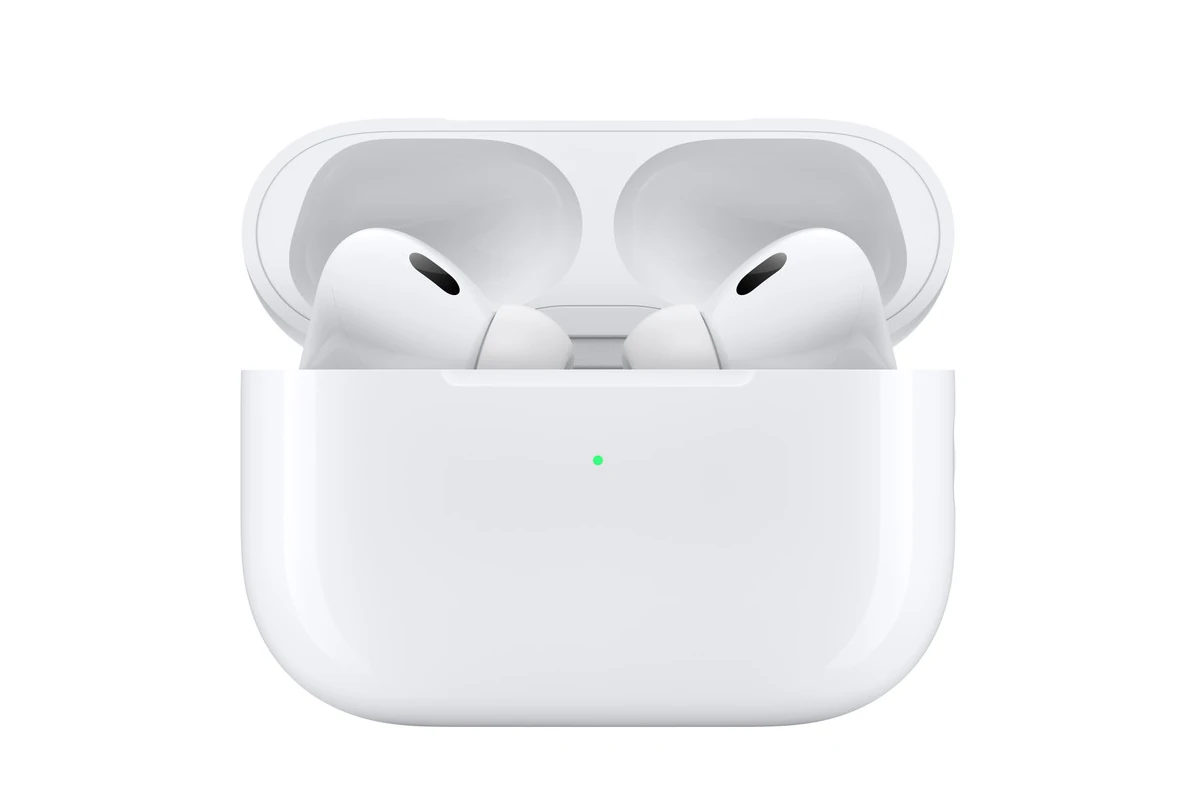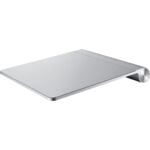AirPods have become an essential accessory for many Apple device users around the world. Since their release, they have revolutionized the way people listen to music, make calls, and interact with Siri. Like any technology, AirPods are not without their problems. Users may face issues ranging from connectivity problems to charging and sound quality issues.
Apple has diversified its AirPods lineup, introducing variations like AirPods Pro and AirPods Max to cater to different user needs. Each model comes with its unique features and potential issues. Some common problems users might encounter include a single AirPod not working, difficulty in pairing with a device, or AirPods not charging properly. It’s important for users to know how to troubleshoot these issues efficiently.
To maintain optimal performance and extend the lifespan of their AirPods, users must be aware of enhancement strategies and care tips. Regular cleaning, firmware updates, and proper storage are vital. When problems do occur, solutions can often be found in resetting the devices, cleaning them, or adjusting settings on the connected Apple device.
AirPods Issues: Common Problems and Solutions
Apple’s AirPods are incredibly popular for their ease of use and seamless integration with Apple devices—but like any tech, they’re not perfect. Whether you’re using AirPods (1st–3rd gen), AirPods Pro, or AirPods Max, issues can arise. Here’s a breakdown of the most common problems users experience and how to fix them.
1. AirPods Won’t Connect
This is one of the most common complaints. AirPods may fail to connect to your iPhone, iPad, or Mac due to outdated software, Bluetooth interference, or internal pairing glitches.
Troubleshooting Steps:
- Ensure Bluetooth is On: Toggle Bluetooth off and back on.
- Reset Your AirPods:
- Put both AirPods in the case.
- Press and hold the setup button on the back of the case for 15 seconds.
- Wait for the LED to flash amber, then white.
- Forget and Reconnect: Go to Settings > Bluetooth, tap the “i” next to your AirPods, and choose Forget This Device. Re-pair them afterward.
- Update iOS/macOS: Compatibility issues can occur on outdated systems.
2. One AirPod Not Working
Sometimes only one AirPod produces sound. This can happen due to connection bugs or uneven battery drain.
Solutions:
- Place both AirPods in the charging case for at least 30 seconds.
- Clean the AirPods and charging case—debris may be blocking charging.
- Go to Settings > Accessibility > Audio/Visual and check audio balance.
- Try a full reset (see above).
3. Low or Distorted Sound Quality
If your AirPods sound muffled, quiet, or distorted, the issue is often physical.
What To Check:
- Earwax/Dirt: Gently clean the speaker mesh using a dry soft-bristle toothbrush or microfiber cloth.
- EQ Settings: In Settings > Music > EQ, try turning EQ off or selecting Flat.
- Bluetooth Interference: Turn off other Bluetooth devices nearby and re-test audio.
4. AirPods Disconnect Randomly
Intermittent disconnections are frustrating and usually linked to Bluetooth interference or outdated firmware.
How To Fix:
- Reset the AirPods and your Bluetooth settings (Settings > General > Transfer or Reset iPhone > Reset > Reset Network Settings).
- Check battery levels—low power can cause connection drops.
- Keep AirPods firmware updated (firmware updates install automatically when connected to a charger near an iPhone).
5. Microphone Not Working
When people can’t hear you clearly on calls, your AirPods’ mic may be to blame.
Quick Fixes:
- Clean the microphone ports.
- Go to Settings > Bluetooth > [Your AirPods] > Microphone and try switching from Automatically Switch AirPods to either Always Left or Always Right.
- Try a reset and re-pairing.
6. Charging Issues
Your AirPods or the case may not charge due to debris, cable issues, or worn-out components.
Troubleshooting Checklist:
| Issue | Possible Solution |
|---|---|
| Case not charging | Try a different Lightning cable and power adapter |
| AirPods not charging in case | Clean the case’s charging ports and AirPods stems |
| Wireless charging not working | Ensure correct placement on Qi-certified pad |
| Charging animation doesn’t appear | Reopen lid near iPhone; wait a few seconds |
7. AirPods Case LED Behavior
The LED light on your AirPods case communicates various statuses.
LED Color Meanings
| LED Color | Meaning |
|---|---|
| White (flashing) | Ready to pair |
| Amber (flashing) | Pairing error; try resetting |
| Green (solid) | Fully charged |
| Amber (solid) | Charging or low battery |
| No light | Case is out of power or not in use |
8. AirPods Not Switching Automatically Between Devices
This feature only works smoothly with newer devices signed into the same Apple ID and running iOS 14/macOS Big Sur or later.
Fixes:
- Make sure Automatic Switching is enabled in Settings > Bluetooth > [Your AirPods] > Connect to This iPhone.
- Check that all your Apple devices are signed into iCloud.
- Update all devices to the latest OS version.
Here’s a model-specific breakdown comparing the most common issues across AirPods, AirPods Pro, and AirPods Max, along with relevant notes on what makes each model’s problems unique.
Model-Specific AirPods Issues Comparison
| Problem | AirPods (1st–3rd Gen) | AirPods Pro (1st & 2nd Gen) | AirPods Max |
|---|---|---|---|
| Connection Issues | Common with older models | Common, especially with ANC enabled | Rare, but may occur with auto-detect settings |
| One Side Not Working | Often due to dirty charging contacts | Can be caused by fit test failure or blockage | Uncommon, typically hardware-related |
| Distorted Audio | Dirty speaker mesh is a usual cause | May also be caused by broken Adaptive EQ | Firmware glitches have caused crackling |
| Frequent Disconnections | Common in 1st/2nd Gen with iOS 16+ | Can occur during noise control transitions | Sometimes when switching between Apple devices |
| Microphone Issues | Mic holes clog easily | First-gen Pro models had known mic problems | Mic rarely fails, but ANC feedback can affect calls |
| Charging Problems | Battery aging is common in older sets | Dust in stem contacts causes mischarging | Lightning port or Smart Case contact issues |
| Noise Cancellation Issues | Not applicable | ANC may degrade over time or need calibration | Active noise cancellation rarely fails, but transparency mode may glitch |
| Fit/Comfort Problems | Universal fit may not suit everyone | Silicone tips help but may fall out | Heavy weight can cause fatigue with long use |
| Software Bugs | Rare, but sometimes with iOS updates | Firmware bugs sometimes affect ANC or Hiss | Occasionally needs reset after firmware updates |
| Automatic Switching Fails | Often needs re-pairing across devices | Improved in Pro 2 but still inconsistent | More stable but slow with older iPads or Macs |
Notes on Each Model
AirPods (Standard Models)
- No ANC or Transparency Mode.
- Prone to battery wear over time, especially on 1st and 2nd gen.
- Frequent issues include audio imbalance and low mic sensitivity.
AirPods Pro
- First-gen Pro models had known issues with crackling/static—Apple offered extended service.
- Requires good ear tip fit for ANC and audio performance.
- Pro 2 significantly improved noise cancelation and stability.
AirPods Max
- Less prone to day-to-day issues, but software-related bugs occasionally affect ANC and spatial audio.
- No power button—depends on the Smart Case for sleep mode, which has caused battery drain confusion.
- High-quality sound but heavier than most over-ear alternatives.
Key Takeaways
- AirPods occasionally face technical issues such as connectivity and sound problems.
- The AirPods lineup, including the AirPods Pro and AirPods Max, has model-specific issues.
- Proper care and troubleshooting can resolve most issues and prolong device lifespan.
Addressing Specific AirPods Use Cases and Functions
This section covers practical steps for using AirPods effectively, from initial setup to maintaining them and solving common problems.
Initial Setup and First-Time Use
When using AirPods for the first time, open the charging case and press the setup button until the status light flashes white. This signals that the AirPods are ready to pair with your device. Follow on-screen instructions on your iPhone, iPad, or Mac to complete the setup.
Maximizing Accessibility and Convenience
Enhance your AirPods’ functionality by customizing gestures through your device’s Bluetooth settings. Toggle features like automatic ear detection and accessibility options to streamline your listening experience.
Ensuring Optimal Audio Experience
For the best audio quality, adjust your AirPods’ settings to balance the volume levels and ensure noise cancellation is functioning properly. If issues arise, resetting AirPods can restore factory settings and often fix audio problems.
Maintaining and Cleaning AirPods
Keep your AirPods clean to maintain sound quality. Gently remove earwax, debris, and dust using a soft, lint-free cloth dampened with isopropyl alcohol. Use cotton swabs or a soft-bristled brush to carefully clean the speaker mesh.
Finding Solutions for Lost AirPods
If you lose your AirPods, use the Find My app to locate them. If they’re out of range or not connected, the app will show their last known location. For misplaced AirPods in your proximity, play a sound to find them.
Navigating Warranty and Support
Check your warranty status by visiting Apple Support and providing your serial number. For technical issues, contact Apple Support or make an appointment with an Apple Genius for in-person help.
Leveraging Wireless Charging Capabilities
For models that support it, place your AirPods in the wireless charging case on a Qi-certified charging mat. Check the charge status with the case’s light or via your connected iOS device.
Understanding AirPods Firmware and Software
Keep your AirPods up to date by ensuring that your connected iOS device is running the latest software. Your AirPods will automatically update their firmware when they are connected and charging. Check the current firmware version through the General and About settings on your iOS device.
Enhancement and Care Strategies
Proper care and correct settings can maximize the performance of AirPods. They key in on specifics like connectivity, sound quality, and device maintenance.
Optimizing Device Settings for AirPods
Listeners can adjust the settings on their iOS, iPadOS, or macOS devices to enhance their AirPods experience. Ensuring Bluetooth is on is the first step. They should then open settings, tap Bluetooth, and select their AirPods. Users can customize features like the double-tap function and check for software updates that might fix common issues.
Cleaning and Maintenance Techniques
It’s critical to keep AirPods clean. Debris, earwax, or dust can muffle sound. Users should gently wipe their AirPods with a lint-free cloth slightly dampened with isopropyl alcohol. They can use a soft, dry, lint-free cloth to clean the body. For a clogged speaker mesh, a dry cotton swab works well. Always avoid using sharp objects or excessive moisture that could damage the AirPods.
Battery Life Optimization and Monitoring
Battery life extends when one manages AirPods charging habits. Users should monitor their charge status on connected devices to avoid overcharging, which can reduce battery lifespan. Making use of features like the wireless charging case can contribute to efficient battery usage. Cleaning the charging ports regularly will also ensure better charging contact.
Preventive Care and Handling of AirPods
Good handling practices prevent common AirPods problems. Users should always store AirPods in their charging case when not in use. This helps avoid loss and exposure to harmful conditions. They should keep the case away from extreme temperatures and refrain from dropping or pressing hard on the AirPods which could impact the internal hardware.







